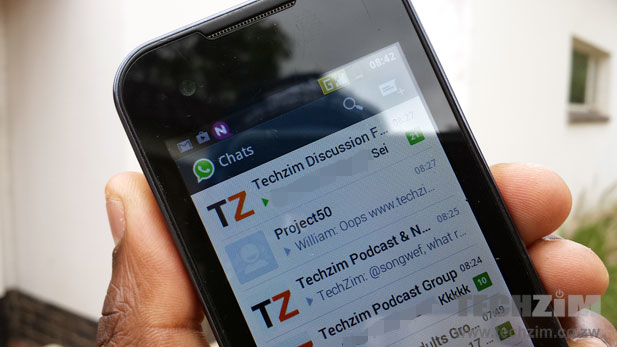If something is all the rage, you’re likely to see everyone falling over themselves to get their hands on it. Just look at the Scramble for Africa as an example. Fast forward to 2015 and it’s now the Scramble for Telemedicine. In Zimbabwe, several imperial corporate entities are competing against each other for a piece of this profitable pie.
Econet launched its dial doctor service. NetOne are also following suit. Some of these initiatives, like the NetOne service, are still in the pilot phases and have not yet broken through to become nationwide or mainstream phenomenon.
This kind of gives the impression that Telemedicine is nonexistent in Zimbabwe. However, I was recently surprised to discover that Telemedicine is very much alive and well, on a nationwide scale too! This may be shocking news but the most widely used channel for telemedicine may actually be WhatsApp.
WhatsApp has crept its way into aspects of our everyday life. It’s mentioned in songs, quoted in the news, talked about on the Mai Chisamba show and even cited as principal evidence in a criminal court case. It is responsible for many a marriage and ironically many a divorce. It’s therefore not surprising that doctors are finding it useful too.
Too simple you may be thinking, but Telemedicine has a broader definition that just paid doctor consultation over the phone. The World Health Organization defines it as
“The delivery of health care services, where distance is a critical factor, by all health care professionals using information and communication technologies for the exchange of valid information for diagnosis, treatment and prevention of disease and injuries, research and evaluation, and for the continuing education of health care providers, all in the interests of advancing the health of individuals and their communities”.
Based on that, one can begin to appreciate how WhatsApp is being used to improve patient outcomes by increasing access to care and medical information. Here are some of the ways it’s satisfying that broad definition.
1. WhatsApp groups-. Doctors in a firm are using it to remain connected through groups which enable better communication and coordination among team members. This is bringing efficiency in carrying out duties, which translates to better patient outcomes.
2. Within WhatsApp groups- Grand rounds are being conducted in which doctors exchange ideas about a particular case. These are meant to gather various opinions of possible diagnoses, treatment plans, and outcomes. Images of X-rays are being shared for discussion.
3. At the point of care – WhatsApp is being used for quick peer consultation to check a diagnosis or correct drug dosages. This is something that already established apps like Medscape or Epocrates can do. However, quick advice from a colleague just does it better. The health information apps managed to bring entire medical libraries into the palm of our hands, but the information doesn’t come in a quick ready to use format. That is where being readily connected to colleagues via WhatsApp becomes priceless.
4. WhatsApp is being employed in the decentralization of access to health particularly for remote areas where specialist services are nonexistent. There is a brilliant psychiatrist based in Harare who is using WhatsApp to communicate with doctors working in the peripheral hospitals advising them on the management of their difficult cases.
5. The recent nationwide strike by doctors was well orchestrated via WhatsApp! Being a social network, it is enabling medical teams to bond as they share both lighter and darker moments with each other. In a way, WhatsApp is already doing the job that apps like Doximity are being designed to do; to be a social network for doctors.
WhatsApp is saving lives. Being the only doctor on call, I was once confronted with a patient who was battling severe snake bite poisoning. Through a WhatsApp group, I managed to quickly consult several, distant colleagues who collectively gave me the information I needed to save his life.
WhatsApp has the potential to break down barriers between health personnel working in different departments for the building of the all important health care team. It has the potential to connect doctors to their patients and even a patient to other patients in a health support network.
Sounds too simple doesn’t it? Or it is complex through its simplicity? Whatever it is, Telemedicine seems to be alive and well in Zimbabwe.

Comments
2 responses
As long as we understand that telemedicine is a tool used to practice medicine, not the practice of medicine itself it should be used where it can be.Its regulation strongly depends on the intimate understanding of what can or can not be done via Whatsapp or the phone.Pictures of wounds or Xrays can be sent via whatsapp for physician to recommend .However and for obvious reasons it can NOT be used in some conditions since the physician has to rely on what the patient is saying as opposed to what the patient is actually going through.This has a danger of opening legal issues in case something wrong happens.The physician can disclaim responsibility on the basis that he acted based on the info the patient provided. So medical regulations MUST not blanket ban its use but come up with a clear usage guidelines.
It cannot be said better Robert!!!!!